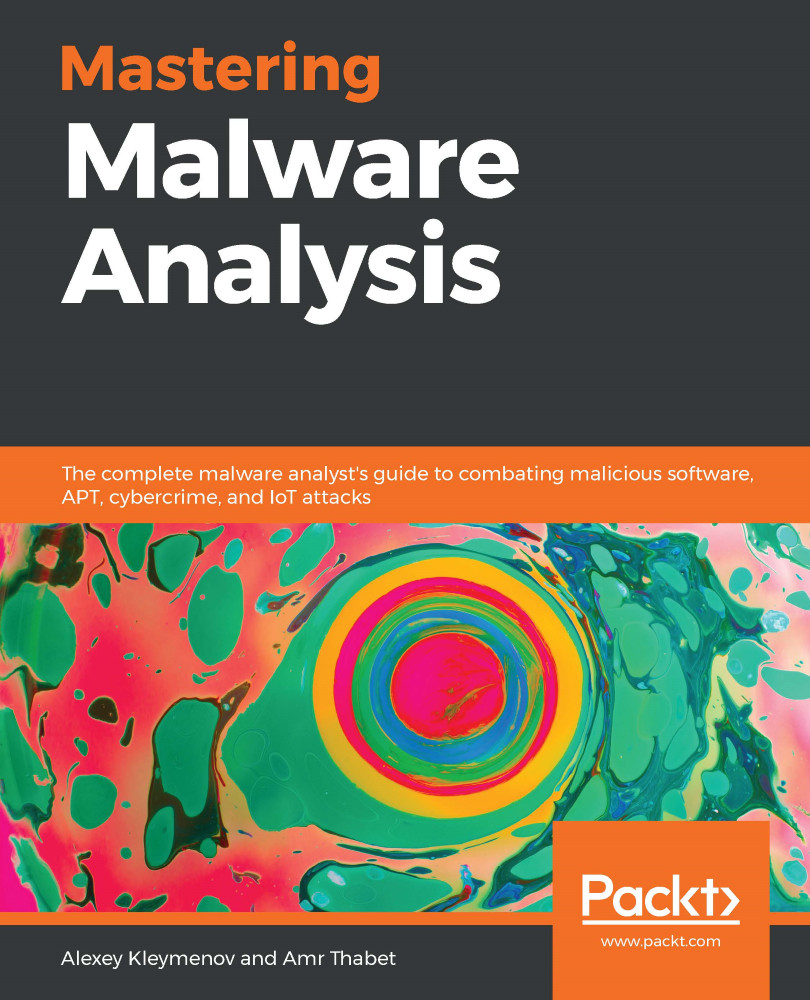As we already know, API hooking is generally used together with the process injection, and dealing with API hooking in dynamic analysis and memory forensics is very similar to dealing with process injections. Adding to the previous techniques of detecting process injection (using malfind or hollowfind), we can use a Volatility command called apihooks. This command scans the process's libraries, searching for hooked APIs (starting with jmp or a call), and shows the name of the hooked API and the address of the hooking function, as shown in the following screenshot:

We can then use vaddump (as we described earlier in this chapter) to dump this memory address and use IDA Pro or any other static analysis tool to disassemble the shellcode and understand the motivation behind this API hooking.


